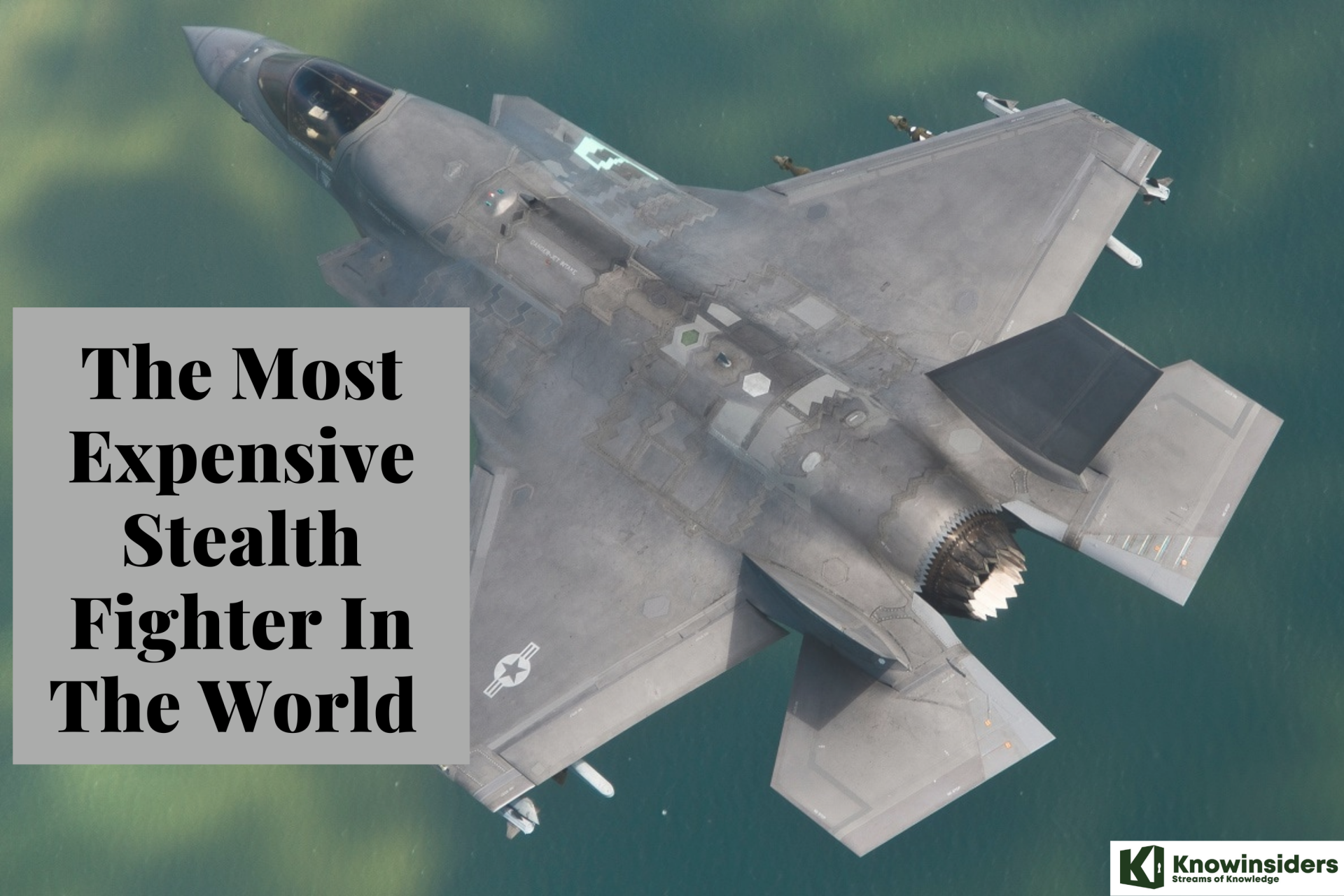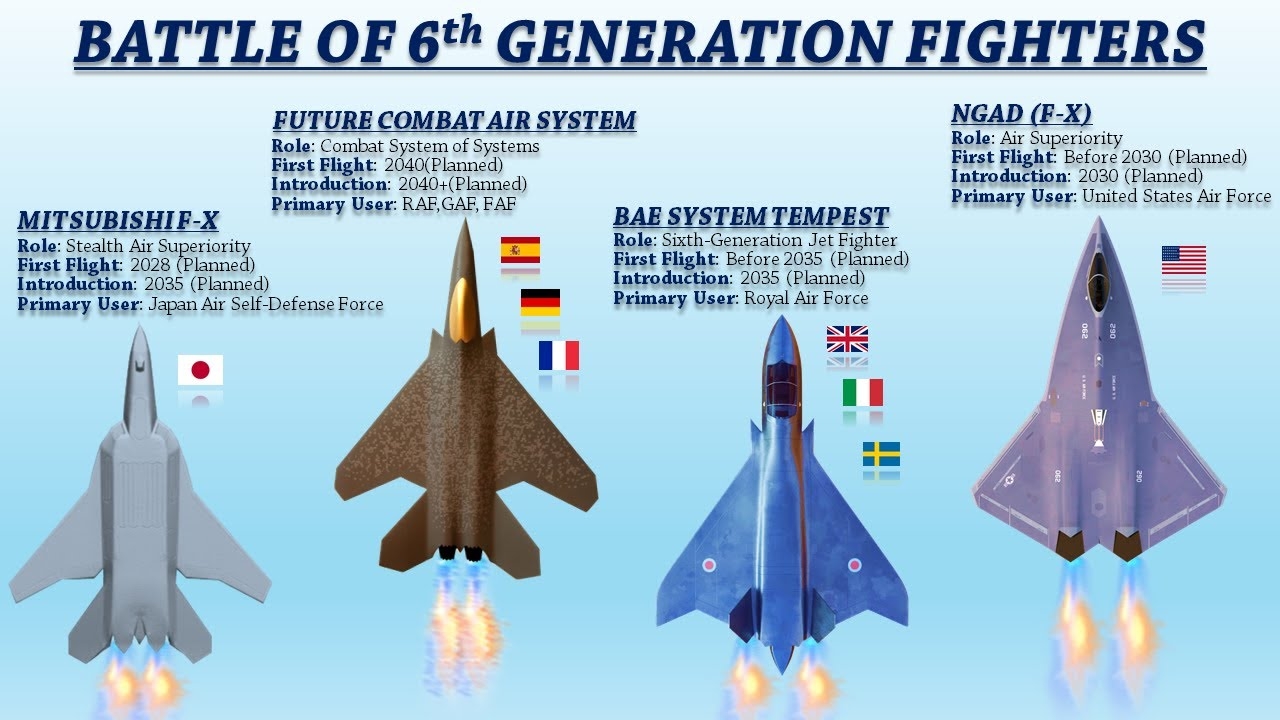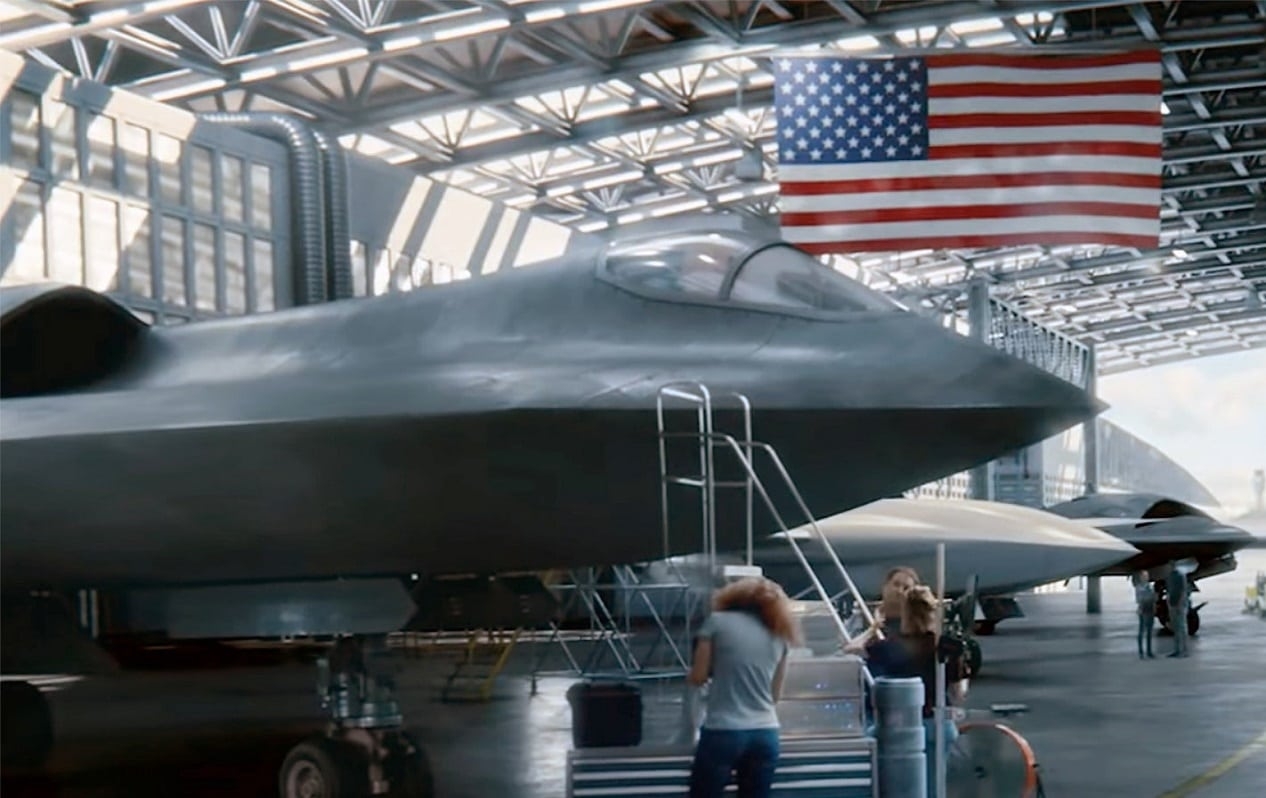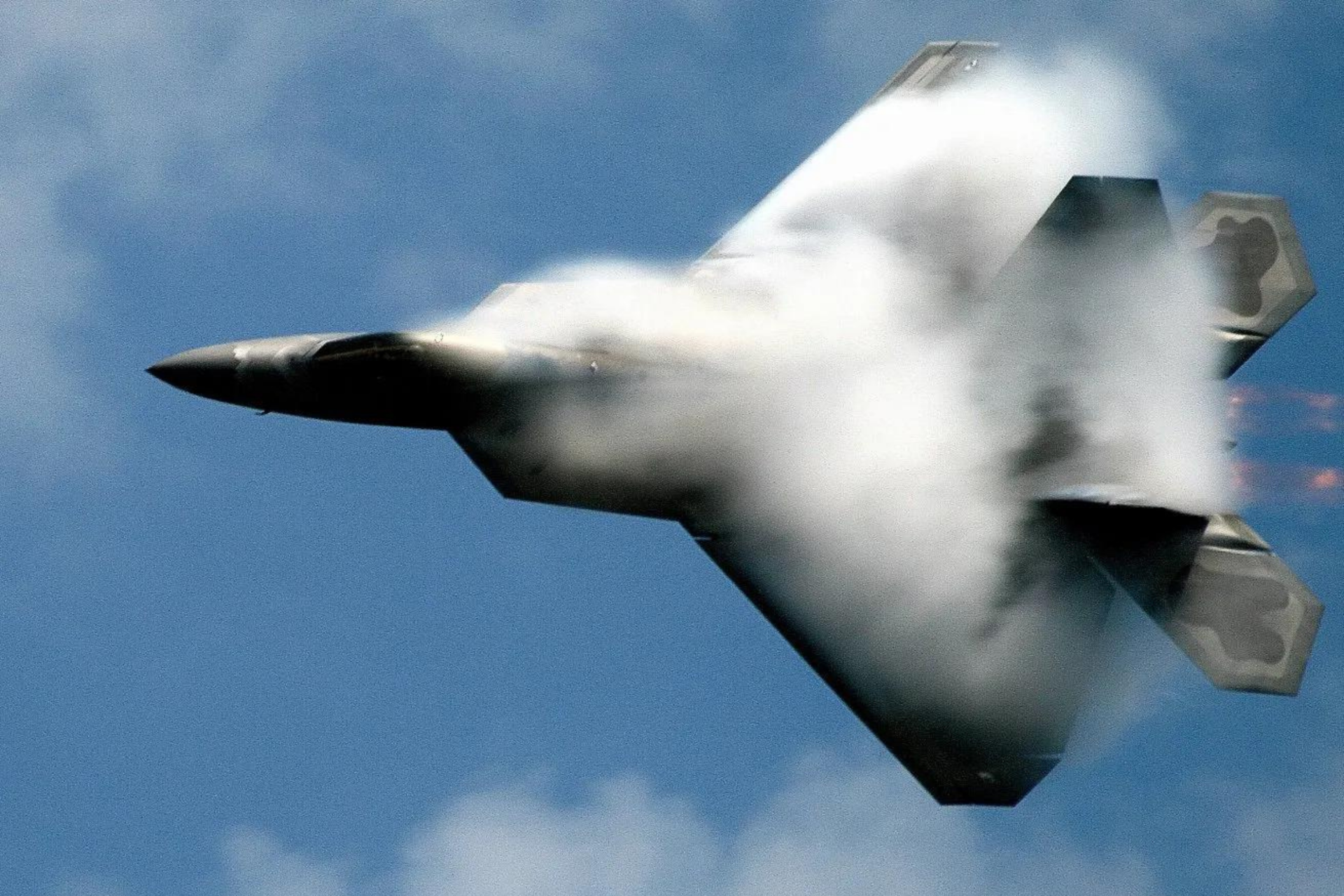Facts About the U.S 6th-Generation Stealth Fighter - Most Expensive In The World
 |
| NGAD (Next-Generation Air Dominance): The Most Expensive Stealth Fighter In The World |
This transition started when radar technology was implemented during World War II. Fighter planes were heavily exposed to the enemy due to their reflections on the radar. Since radar technology was developed during the Second World War, it shouldn’t be surprising to learn that the first attempts at stealth technology also occurred during this period. In fact, it was the Germans, not the Allies, who worked on this project. The Germans were responding to the success that the Allies were having with their early radar sets. Not only was their radar very effective at spotting incoming enemy bombers, but it was also extremely important in the battle for the Atlantic.
The United States’ first stealth development was totally accidental. Shortly after WWII, Northrop Aircraft developed an experimental bomber called the YB-49 Flying Wing. As the name implies, the aircraft had no body or tail… it was simply a large flying wing. The aircraft was assigned to perform a normal test flight over the Pacific. When the test was completed, they turned and headed for home, pointing the slim wing edge directly at the base radar station. The radar crew was shocked to see the aircraft suddenly appear overhead, as they had seen no evidence of it on the radar screen.
The U.S. NGAD (Next-Generation Air Dominance) 6th-generation fighter just got a shot in the arm. President Joe Biden’s recent defense budget proposal is promising research and development funds for the newfangled warplane. This largesse could help the U.S. Air Force and Navy vault ahead of the Chinese and Russians. The Next-Generation Air Dominance program will produce the follow-on airplane to the F-22 the F/A-18 E/F and if early reports are accurate, the resulting fighter could become the king of the skies.
The United States Air Force (USAF) anticipates that the prospective Next Generation Air Dominance (NGAD) sixth-generation aircraft, which lawmakers have criticized for various factors, will cost hundreds of millions of dollars each tail.
What is Stealth Aircraft?
Military planes have been developed with “stealth” characteristics. This means that such a plane has a very small σ, or radar cross-section, relative to other aircraft of similar size. It can still be detected by a sufficiently powerful radar or at sufficiently close ranges. Because the size of stealth aircraft is similar to other military aircraft, the stealth characteristic is achieved by reducing the amount of radar signal power that is reflected back from the stealth aircraft to the transmitting radar. There are two fundamental methods to reduce the reflected energy: either absorb the radar signal or deflect it in a different direction that the radar transmitter. Special radar absorbant materials are used in stealth aircraft. The shape and contours of the aircraft greatly influence effective radar cross-section.
A concave surface tends to reflect radar waves in the general direction of the direction of arrival, back to the transmitter. This is to be avoided in stealth aircraft. Examples of concave surfaces are engine inlets, right angles where wings join the fuselage, open bomb bays, and even the cockpit if the windscreens are transparent to radar signals. Convex surfaces, on the other hand, tend to scatter the radar waves in widely separated directions, reducing the amount of energy reflected back to the source. For example, the B2 stealth bomber is shaped like a flying wing, which is basically a convex shape when viewed from nearly all directions. Smaller features, such as the engine air inlets, have a geometry designed to reflect impinging radar signals in a direction other than that of the illuminating radar.
6th-Generation Stealth Fighter System
 |
| Photo: Youtube |
The already airborne Air Force 6th-generation stealth fighter will operate as part of an integrated “family of systems” including unmanned drones, manned jets, and a new generation of networking technologies, Air Force Secretary Frank Kendall explained.
“NGAD must be more than just the next crewed fighter jet. It’s a program that will include a crewed platform teamed with much less expensive autonomous un-crewed combat aircraft, employing a distributed, tailorable mix of sensors, weapons, and other mission equipment operating as a team or formation,” he said in an Air Force report.
Kendall described this concept in terms of defining a “system-of-systems” concept for the Next-Generation Air Dominance platform.
Certainly, the Air Force has shown that advanced AI-enabled computer algorithms are capable of processing information in milliseconds, making decisions and performing quite well in dog-fights, at times prevailing over human pilots.
However, there are certain more subjective variables best addressed by human faculties, such as emotion, intuition, and an ability to assess a variety of factors in relation to one another.
At the same time, procedural functions such as data processing, an ability to find moments of relevance among hours of raw incoming information as well as computational assessments and certain kinds of problem solving can all be done in milliseconds by a computer.
Therefore, the optimal approach, many Air Force developers seem to emphasize, it to optimize the best of both manned and unmanned systems operating in close coordination with one another in a networked capacity. This will allow the operator to benefit from the best of each. Perhaps this is why the Air Force has had some success flying manned jets with an unmanned, AI-capable co-pilot.
This kind of synergy seems to encompass much of Kendall’s focus for the 6th-generation platform as it can blend the unparalleled attributes of both human pilots as well as drones. Part of the equation, Kendall also expressed, is the added benefit of cost savings because unmanned systems do not need to be built with a comparable measure of protection.
“We’re looking for systems that cost nominally on the order of at least half as much as the manned systems that we're talking about for both NGAD and for B-21” while adding capability, he said. “
The NGAD platform is expected to incorporate a new generation of stealth fighter jet properties to include new dimensions of speed, maneuverability, stealth properties, sensing, and AI-enabled information processing.
The Air Force has already made breakthrough progress with the ability to operate a “loyal wingman” drone alongside a manned fighter jet. This greatly reduces latency by obviating the need to send video feeds and data through a ground control station and enables manned crews to operate the sensor payload and flight path of a nearby unmanned system.
Sixth-Generation Stealth Fighter Features
According to Aerospace Manufacturing, “the (sixth-generation) fighter will be able to operate at long ranges. This feature matches the above concept image released by USAF, which shows an aircraft with a larger blended wing airframe that would give more room internally for a larger weapons bay and fuel tank.”
Kelly confirmed that the aircraft is “designed to operate beyond a single spectral band of the RF (radio frequency) spectrum, to thrive in a multispectral environment,” and it also “senses” the battle space and “connects” the rest of the force.
Back in April, a USAF release outlined NGAD as “a family of capabilities that enable Air Superiority in the most challenging operational environments by enforcing the development pillars of digital engineering, agile software development, and open architectures.”
Sixth-Generation Stealth Fighter Cost
 |
| Photo: 19fortyfive |
On April 27, Air Force Secretary Frank Kendall told members of Congress that the manned fighter aircraft, that will be at the core of the Air Force’s Next Generation Air Dominance (NGAD) program, would require hundreds of millions of dollars each.
Kendall said the main NGAD fighter will cost “hundreds of millions of dollars… on an individual basis” while testifying before the House Armed Services Committee on the fiscal 2023 budget proposal, conceding that such a massive price tag “is a number that’s going to attract your attention.”
The F-22, on the other hand, costs almost $135 million per tail, making it the most expensive fighter ever produced by the US Air Force. The F-35A, on the other hand, costs roughly $80 million per plane but remains the most costly project in the history of the US military.
Furthermore, as seen by Lockheed Martin executives’ statement that rising inflation and pandemic supply chain disruptions could push the cost of the F-35 stealth fighter higher than planned. As a result, the cost of this aircraft is expected to rise even further.
According to Kendall, NGAD will exceed such expenditures, at least in terms of cost per plane. But, as Kendall pointed out, the sixth-generation platform will play an important role in air domination.
“It’s going to be an expensive airplane; F-22 was an expensive airplane. It’s also an incredibly effective aircraft. It’s been dominant in the air for decades now. And we expect NGAD to be the same,” Kendall said.
Concerned Over Price
However, it appears that the United States will attempt to keep the overall cost of the program low. Kendall emphasized that the service can lower development and maintenance costs.
“That starts in development,” Kendall added, emphasizing the importance of designing the system so that “you can do upgrades and do maintenance very efficiently.”
The F-35’s sustainment expenses and challenges have underlined this requirement, which has ballooned to massive costs for the program that will exceed $1.25 trillion over its service life.
The F-35 program began in 1992 to create a cost-effective, one-size-fits-all aircraft for the Air Force, Marine Corps, and Navy. However, last year, the Air Force publicly admitted that it failed the affordability test.
Meanwhile, given the scarcity of fighter aircraft across services, US senators had previously raised concern about diverting resources from in-production fighters to future programs such as NGAD, which are still in the planning stages.
That is why the military is attempting to justify the aircraft’s expense by portraying it as a requirement for future conflicts.
Sixth-Generation Stealth Fighter Engine Development
While outlining the NGAD fighter, Kendall also referenced the Advanced Engine Transition Program, which is still in development and will likely power the NGAD fighter.
The next-generation engines being developed as part of the AETP (Adaptive Engine Transition Program) are cutting-edge, with higher range, acceleration, and cooling capability.
The next-generation fighter jet engine is designed and optimized for the Lockheed Martin F-35. However, the propulsion technology will also be used to power the US Air Force’s Next Generation Air Dominance (NGAD), a sixth-generation fighter program.
The engines have piqued Congress’s interest since Air Force’s budget request for 2023 allocates $273 million to AETP. This raised concerns among lawmakers that the Air Force was developing a second F-35 engine program.
“It’s not a second F-35 engine. It’s a completely new and much-improved F-35 engine, potentially,” Kendall said.
“It’s a technology that was in very early stages of development when I first saw it in 2010 and has matured fairly well. It offers the opportunity for, on the order of 20-25 percent cost savings or mission-range improvements. So it’s a substantial improvement and would be a replacement for the current engine, not a second one.”
Kendall indicated that, like NGAD, the price of AETP is expected to be substantial. He further said that getting that engine fully developed and into production will cost [more than] $6 billion in development costs.
The service is paying for the development this year, for the next increment, but it will have to contend for resources in its budget in the future. However, the system would have a significant advance above present capabilities.
What is the Difference From Fifth-Generation Like F-22 Raptor?
 |
| Photo: timesnownews |
For most fifth-generation fighters, aviation experts generally have five universally accepted features: stealth, advanced maneuverability, next-gen avionics systems, multi-role capabilities, and network or data fusion capabilities.
In contrast, as noted by EurAsian Times, “a sixth-gen aircraft is likely to comprise everything that defines a fifth-gen fighter jet besides some additional features.”
It continues: “There is a school of thought which believes that the next-generation aircraft could be unmanned, whilst maintaining the option of keeping a manned crew. While this is purely speculation, there may be some merit to this as air forces the world over are working on their loyal wingman concept of pairing a manned aircraft with one or multiple UCAVs.”
Utilizing swarm drones and being able to complete missions in highly hostile environments will also be key.
“Swarm drones are likely to feature in the sixth-gen fighter programs. Sophisticated AI-driven heads-up displays (HUD) and data fusions to enhance a pilot’s situational awareness and reduce cognitive load during air combat are other predictions,” the site writes.
“An additional aspect that may truly mark sixth-gen fighters would be the ability to operate in previously non-permissive environments with lowered operational risk. This may be achieved by leveraging a combination of low observable technology and advanced electronic warfare capabilities, including the USN patented laser-induced plasma filament holograms which may spoof enemy air defense systems and hostile infrared missiles,” it continues.
Is It Already Flying?
There have been reports that the Air Force has built a technology demonstrator for the NGAD and it is already flying. The service branch acquisition leaders say the platform is “breaking records.” But high spending is still an issue on Capitol Hill.
Air Force Leadership Believes in the NGADAir Force Secretary Frank Kendall got an earful about these soaring costs at a House Armed Services Committee hearing on April 27, but he answered back with optimism about the NGAD based on his experience with the development of the F-22. “It’s going to be an expensive airplane; F-22 was an expensive airplane. It was one of my aircraft in one of my earlier positions, but it’s also an incredibly effective aircraft. It’s been dominant in the air for decades now. And we expect NGAD to be the same,” Kendall told lawmakers. |
 Less or High Risk for Jeff Bezos's Blue Origin Space Flight? Less or High Risk for Jeff Bezos's Blue Origin Space Flight? Blue Origin's first human launch with Jeff Bezos: Who are crew members, How to Watch Live, When and Where to Launch, High Risk or Less ... |
 Qantas's Supermoon Flight: Ticket Price, Schedule, Passenger and Lunar Views Qantas's Supermoon Flight: Ticket Price, Schedule, Passenger and Lunar Views Qantas airlines offers passengers chance to see supermoon from sky or flight to nowhere during Covid-19 pandemic. What is Supermoon Flight: Ticket Price, Date&Schedule, ... |
 6 Oldest Flight Attendants Ever in the World 6 Oldest Flight Attendants Ever in the World Flight attendants have been staples of air travel since 1912 when Heinrich Kubis became the first-ever flight attendant. Discover the 6 Oldest Flight Attendants ... |























